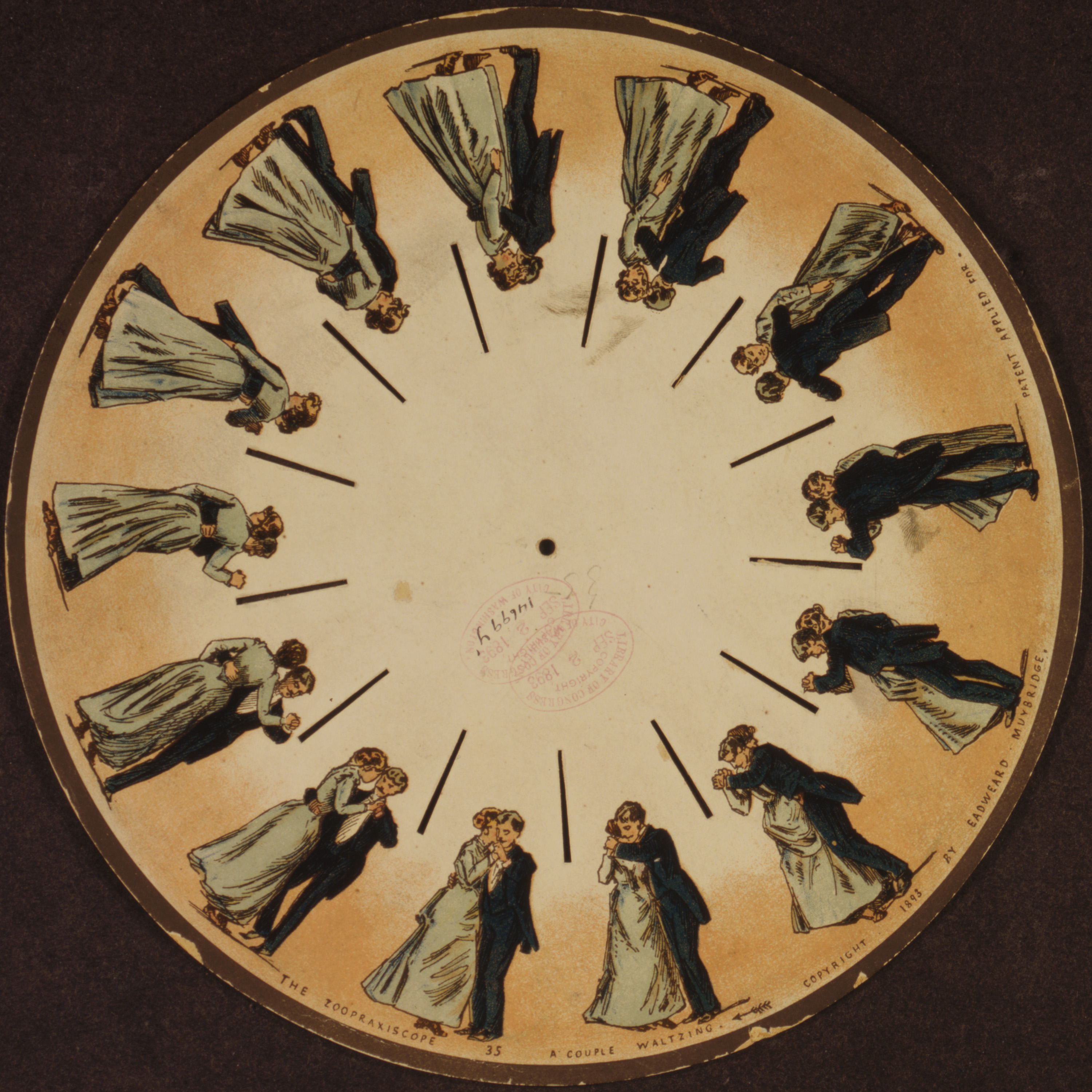The development of Animation and the Pioneer’s
A history of pioneers that experimented and developed different takes on movement of images/photography and drawings had developed different types of animations methods that have now been developed immensely with digitalizing animation via computers etc. Some of these famous pioneering animators are of how animation has developed into the animations we see today.
 In 1831 there was a Belgian scientist named Dr. Joseph Antoine Plateau and alongside with his was Dr. Simon Ritter. They both designed and constructed a machine called a Phenakitscope. A Phenakitscope was a deception that the rotating disk containing small windows, and another disk behind it that has images on it gave the illusion of the animation effect, as it moved to the correct speed that it should be spun. This was very popular at the time because it was easy to construct and distribute.
In 1831 there was a Belgian scientist named Dr. Joseph Antoine Plateau and alongside with his was Dr. Simon Ritter. They both designed and constructed a machine called a Phenakitscope. A Phenakitscope was a deception that the rotating disk containing small windows, and another disk behind it that has images on it gave the illusion of the animation effect, as it moved to the correct speed that it should be spun. This was very popular at the time because it was easy to construct and distribute.
Another pioneer is Emile Cohl, who first developed a method of the phantasmagoric (the character having a deceptive appearance, as from something from a dream or creativity,) containing 700 drawings on paper and then shot each frame onto a negative film to produce a film. It is considered to be the first animated cartoon in 1908, he is also known as "The Father of the Animated Cartoon". Photographed images that have been turned into an animation was also started up by Eadweard Muybridge, the man who was asked by the former governor of California, to investigate if a trotting horse’s feet had all lifted off the ground at once. Similar to how we use stop motion today, Muybridge took a series of 25 frames per second as well to create an animation to prove that it is true. Lastly, the Lumiere brothers, Auguste and Louis the creators of cinematography that was first aired publicly in December 28, 1895 in France.
One of the pioneers that portrayed the potential of claymation is Willis O’Brien, He was a motion picture special effects and stop-motion animator. He was well known for his work on the visual effects on movies such as ‘The Lost World’, ‘King Kong’ and ‘Mighty Joe Young’. Willis O’Brien’s work was influenced by Thomas A. Edison who is an inventor of phonography, the motion picture camera etc. As O’Brien’s film ‘The Dinosaur and the Missing Link: A Prehistoric Tragedy’ was noticed by Edison, O’Brien was hired by the Edison company to animate a series of short films also keeping to the prehistoric theme. Working closely with Willis O’Brien was Ray Harryhausen, a stop-motion model animator. Harryhausen along with Peter Peterson worked closely with O’Brien making the film ‘Mighty Joe Young’ with the stop-motion animation. Ray Harryhausen developed his own brand of stop-motion animation, which was known as “Dynamation”. These pioneering developers work closely together in order to create one rare visual aspect of animation at the time. By using different styles of animation to combine their methods and techniques of creating animation into one production of animation to make success.
Bibliography:
Phenakistoscope-http://en.wikipedia.org/wiki/Phenakistoscope
Dr. Joseph Antoine Plateau - http://www.xtimeline.com/evt/view.aspx?id=335417, http://en.wikipedia.org/wiki/Joseph_Plateau
Émile Cohl - http://en.wikipedia.org/wiki/%C3%89mile_Cohl
Eadweard Muybridge - http://en.wikipedia.org/wiki/Eadweard_Muybridge
The Lumière Brothers - http://www.exeter.ac.uk/bdc/young_bdc/movingpics/movingpics10.htm
Willis H. O'Brien - http://en.wikipedia.org/wiki/Willis_H._O'Brien
Thomas Edision - http://inventors.about.com/library/inventors/bledison.htm, http://en.wikipedia.org/wiki/Thomas_Edison
Ray Harryhausen - http://en.wikipedia.org/wiki/Ray_Harryhausen
Pete Patterson - http://en.wikipedia.org/wiki/Pete_Peterson_(animator)
Alice (1988) - http://en.wikipedia.org/wiki/Alice_(1988_film)
Alice (1988) - http://en.wikipedia.org/wiki/Alice_(1988_film)

No comments:
Post a Comment